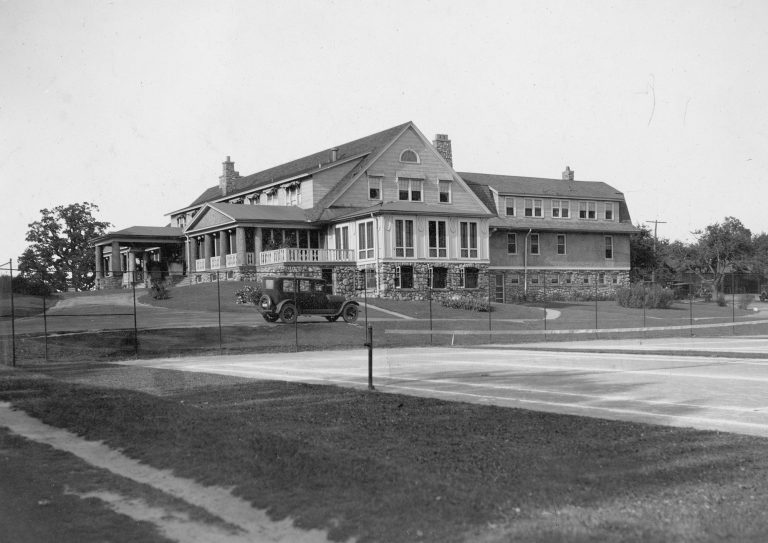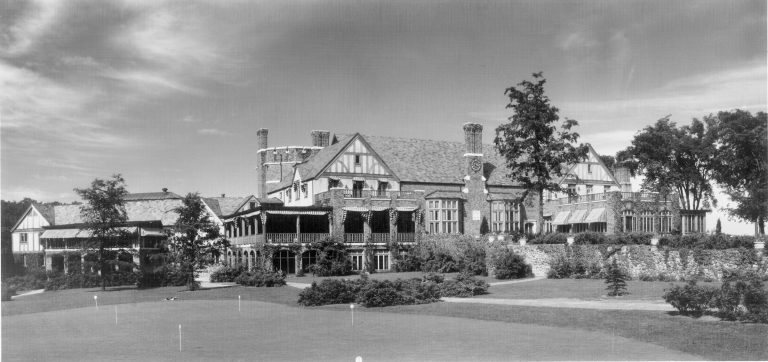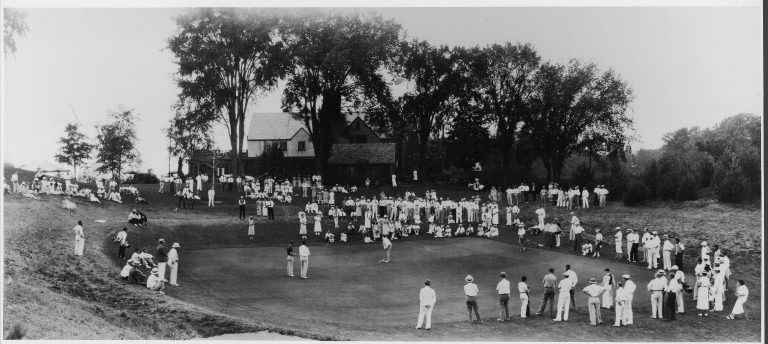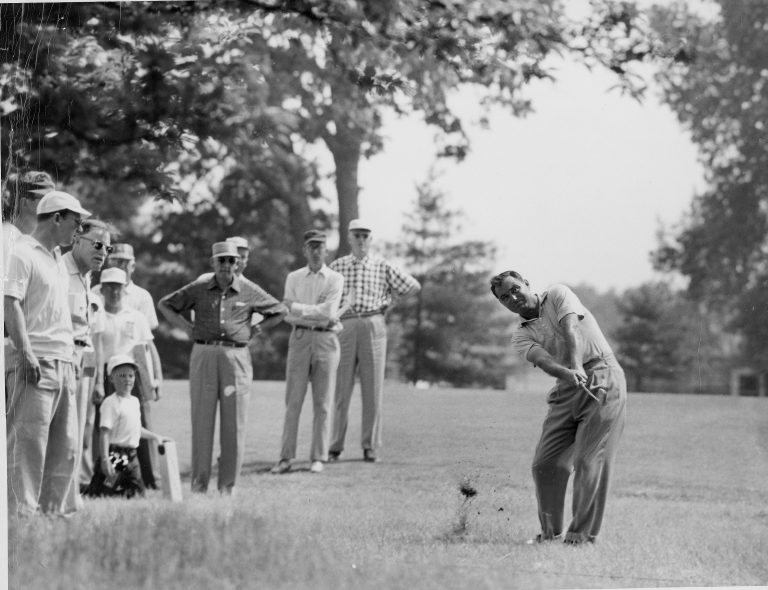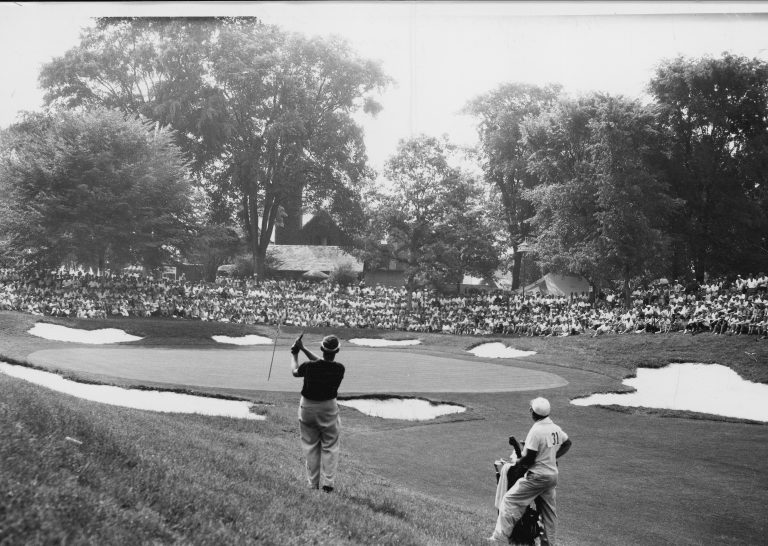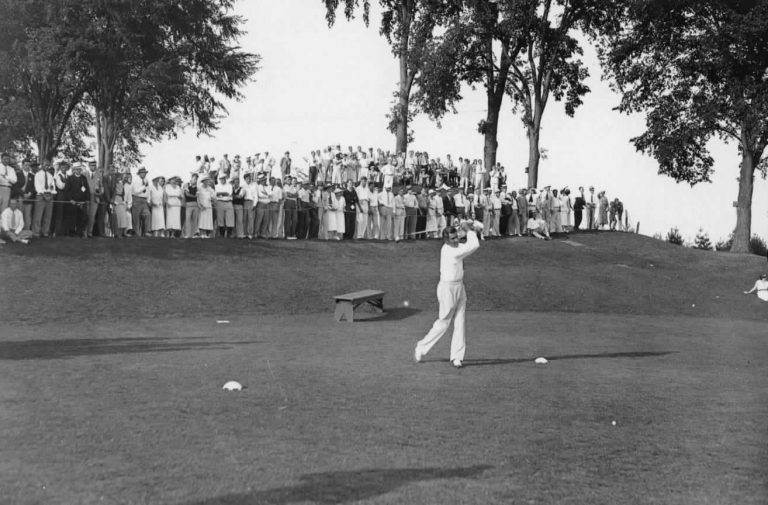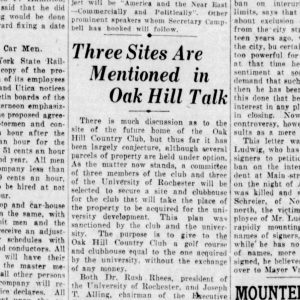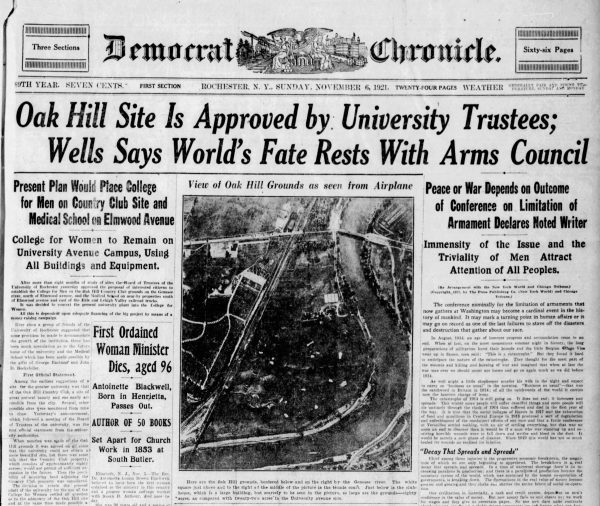Our History
The Creation of a Masterpiece
It certainly wasn’t the stuff that picture postcards are made of, but it was a functional, satisfactory piece of property, those 85 acres comfortably nestled next to the Genesee River that served as home to Oak Hill when the club was formally incorporated in 1901. The leased land was mostly barren, there were only nine golf holes laid out, and the clubhouse was a converted farmhouse lit by kerosene lamps.
However, for the 137 members who began playing this intriguing sport, which was relatively new in America, it was a haven of social activity and recreation, and it was all theirs.
Over the next 20 years, the members – whose original financial commitment to the club consisted of a $25 initiation fee and yearly dues of $20 – watched with glee as Oak Hill grew to become one of the centerpieces of Rochester, a clear reflection of the prosperity the city was enjoying.
In 1905 the members decided to buy the property at a cost of $34,000; in 1910 another nine holes were constructed; in 1911 a new clubhouse was built; and by the end of World War I, Oak Hill was churning out some of the finest golfers in Western New York, a testament to the increasing maturity and difficulty of the golf course.
With its membership growing, golf gaining rabid popularity, and the course beginning to take on some character through careful landscaping and nurturing, Oak Hill was a club its members – who counted some of the most powerful men in the city’s history – were extremely proud of.
Thus, in 1921, when the University of Rochester first proposed a land swap whereby the university would build its new “River” campus on the banks of the Genesee where Oak Hill was situated, with the club being relocated to a 355-acre plot of farmland in the town of Pittsford, the members were understandably skeptical.
However, these men did not achieve their lofty financial, business and community status without being blessed with intelligence, foresight and civic awareness. Though they loved their club, they recognized a golden opportunity that would ultimately benefit Oak Hill, the university and the city.
The university, originally located on Prince Street, was growing in stature, not only locally but nationally and internationally. It needed an expansion, especially after talk that Kodak’s George Eastman, the school’s most generous and influential patron, was interested in funding the building of a music school and a medical center. By allowing the small arts and sciences college a chance to grow into the prestigious institution it is to day, the quality of life in Rochester would only improve.
As for Oak Hill, moving to Pittsford presented an opportunity to start anew, and the club could do so with the university chipping in $360,000 as part of the deal. With its acreage more than quadrupled, there was room for two 18-hole courses that would be designed by world-famous architect, Donald Ross.
Also, a stately Tudor-style clubhouse would be built providing first-class amenities and accommodations for the members, their families and guests. It was a win-win situation, like trading Joe DiMaggio for Ted Williams, and final ratification of the historic agreement came in April, 1924.
The members continued to play on the old course while the Pittsford site was being prepared, and they officially moved to their new home in 1926. It was then that Dr. John R. Williams surveyed the new playground and concluded that Ross’ wonderful designs would be enhanced by trees – thousands upon thousands of oaks, maples, evergreens and elms, but of course, mostly oaks.
The majority of the Pittsford land was barren, much the way the original riverside Oak Hill site was in 1901. The soil had been beaten badly by more than 100 years of farming, and there were very few trees, giving the two courses a cheerless look to them. So Dr. Williams, already a leading research physician who had pioneered the use of insulin to treat diabetes, took up botany and horticulture as a hobby aimed at transforming Oak Hill into the landmark it has become.
He once said, “The Almighty was the greatest landscape architect of all. It was his plan to have oaks at Oak Hill.” And Dr. Williams implemented that plan. He said he lost count at 75,000, the number of seedlings he planted, and as you walk the grounds of Oak Hill today, you can’t help but gaze skyward at the majestic trees that dominate the landscape. They soar to the heavens, lending both an unmatched beauty and a treacherous detriment to one’s scorecard.
It boggles the mind to think that nearly all of these wonders began as little acorns – collected from all over the world – in the small backyard garden of Dr. Williams’ home at 388 Monroe Avenue.

As the trees began to grow, it became obvious that the combination of Ross’ and Williams’ skills had created a masterpiece, and the time to put it to the test arrived in 1934. As a dual celebration of Rochester’s Centennial and the 20th anniversary of native son, Walter Hagen’s first U.S. Open triumph, the Hagen Centennial Open was contested on the East Course, the more demanding of the two courses. Leo Deigel posted a four-round total of 276 and took home the first prize of $600.
Seven years later, the Times Union newspaper put up a $5,000 purse, and a star-studded field of 138 players came to town, led by Hagen, Sam Snead, Ben Hogan and Gene Sarazen. The tournament belonged to Snead who shot 277 and won by seven over Hogan. Despite the ease of his victory, the course had tested Snead, and he said, “This course is certainly one of the finest I have ever seen, fit for either an Open or a PGA.”
Hogan loved the course, too, and he vowed to return in 1942. He did, and he won, shooting a 64 in the first round, which remains the course record.
By this time, Oak Hill was gaining momentum and recognition nationwide, and its reputation continued to build. So much so that as it entered the 21st Century, Oak Hill Country Club would be the only course in America to have hosted all six rotating men’s major golf championships, including the 1995 Ryder Cup and 1998 United States Amateur – 13 major tournaments in all – starting with the 1949 U.S. Amateur.
This content provided by Sal Maiorana, a sportswriter for the Rochester Democrat and Chronicle.


